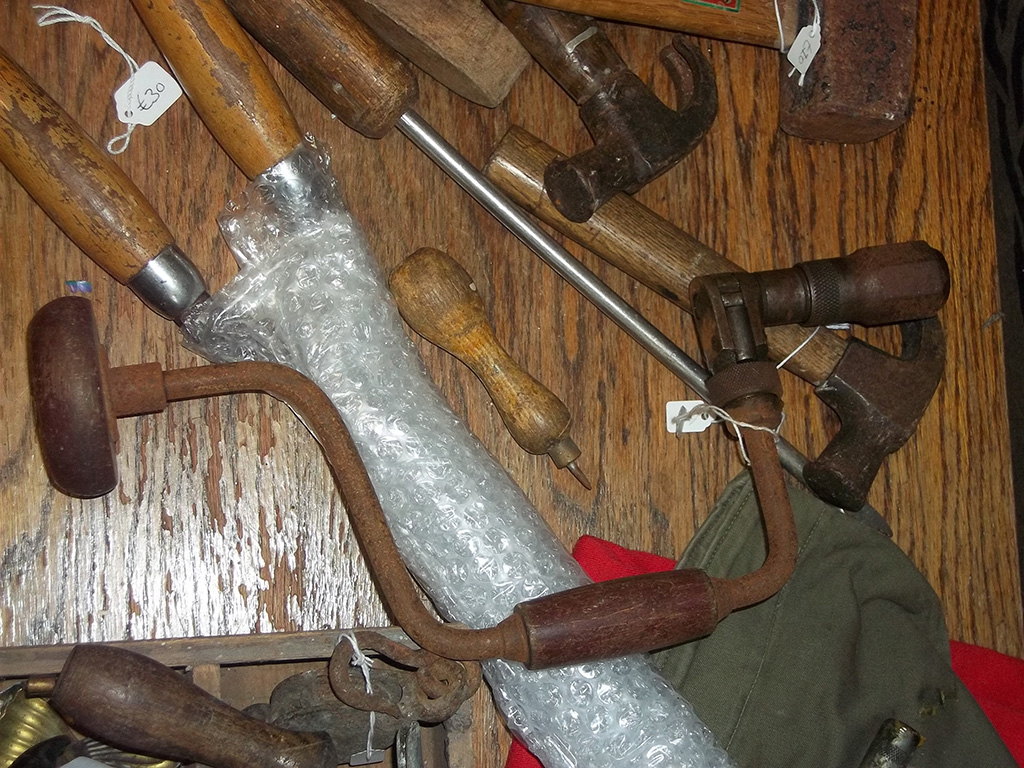Hi Karl, do you know if you want a ratcheting or non-ratcheting brace yet?
If you don't have your heart set on getting a ratchet brace then that opens your options up a bit and it helps with what you can safely take a chance on. Because there's no mechanism a non-ratcheting brace that's covered in rust from head to toe on the outside can sometimes be a user tool as it stands, although of course you will usually want to give it a dust off and a wipe over with an oily rag so loose rust doesn't get transferred to the wood.
Obviously you are going to look at overall condition first but really this can matter little to whether you get a functioning tool. I've seen one shiny brace, still had 99% of its nickel plating, that appeared to have a broken or seized ratchet and on the opposite side I've seen a great many completely rusty ones where the ratchet still worked in both directions, and one or both handles still spun! Here's one of those, the only Hagrem brace I've seen:
So don't overlook the brown ones.
I think the number one thing to look at is the jaws in the chuck. If they're not in line and moving well then I think you should pass unless you're sure you can replace or repair them (guides to this online if you want to learn how). To give this a proper check before buying I would recommend you always unscrew the outside of the chuck (the shell) and look inside to see the underside of the jaws. Even on a rusty brace you may be lucky and find shiny steel and a bit of grease, if it's dry and rusty in there it may be still okay but probably safer to pass.
As to prices, least I've paid for one I think was four or five Euros. Average price over here seems to be €10, even for a rusty example

but you can haggle down from that if it's particularly rusty, any parts are stuck etc. You take a chance on anything stuck, but often you can sort that out at home with a generous application of WD-40 and oil and lots of spinning of the mechanism.

